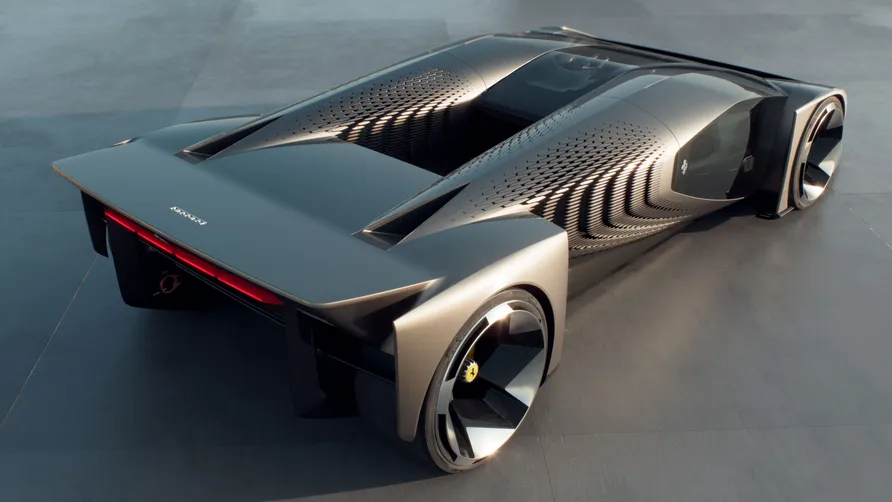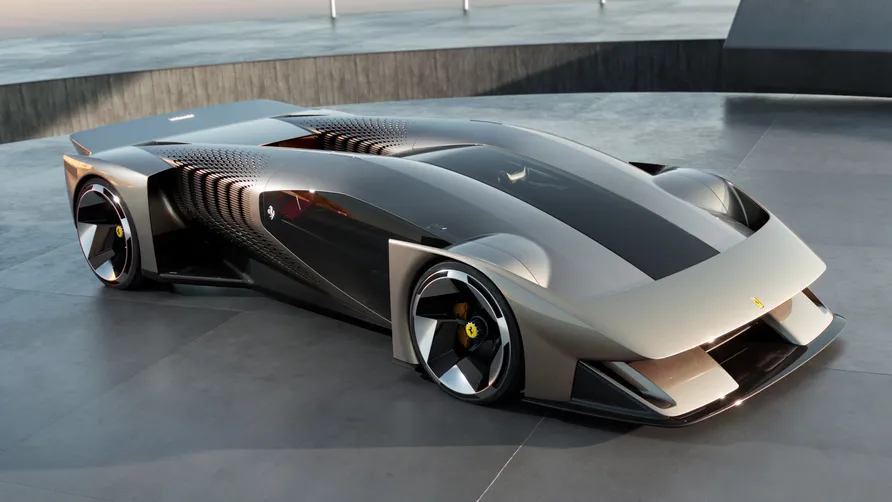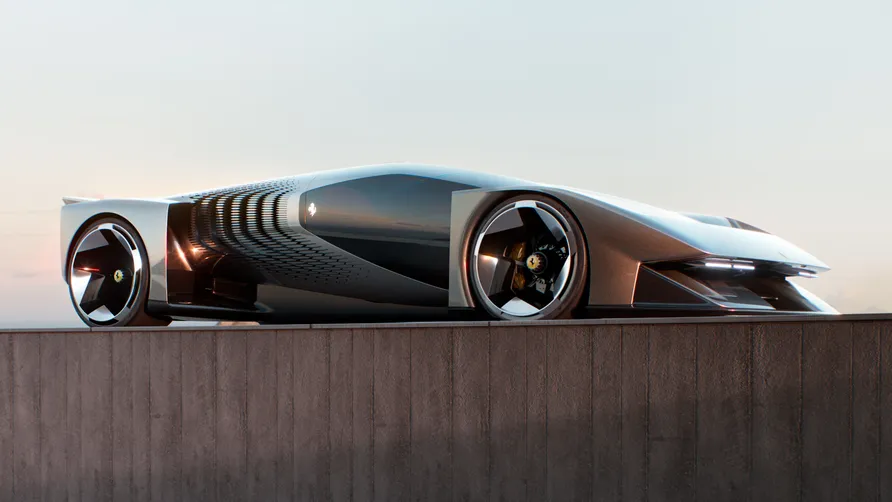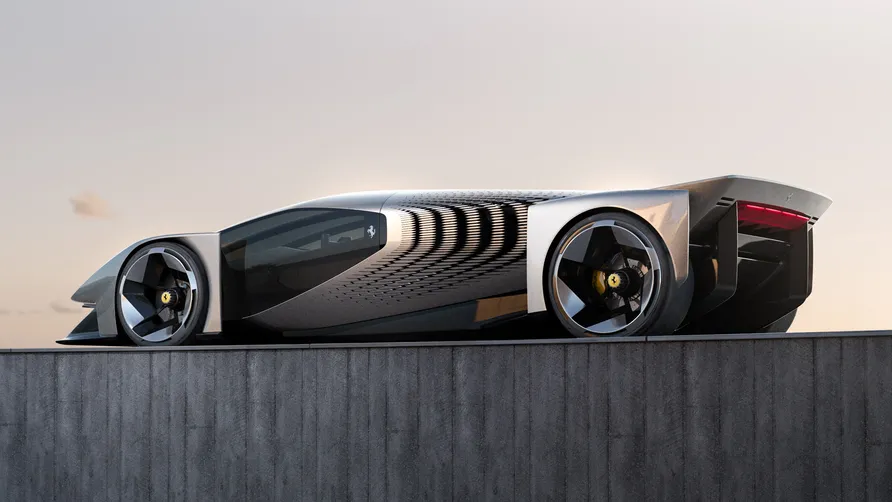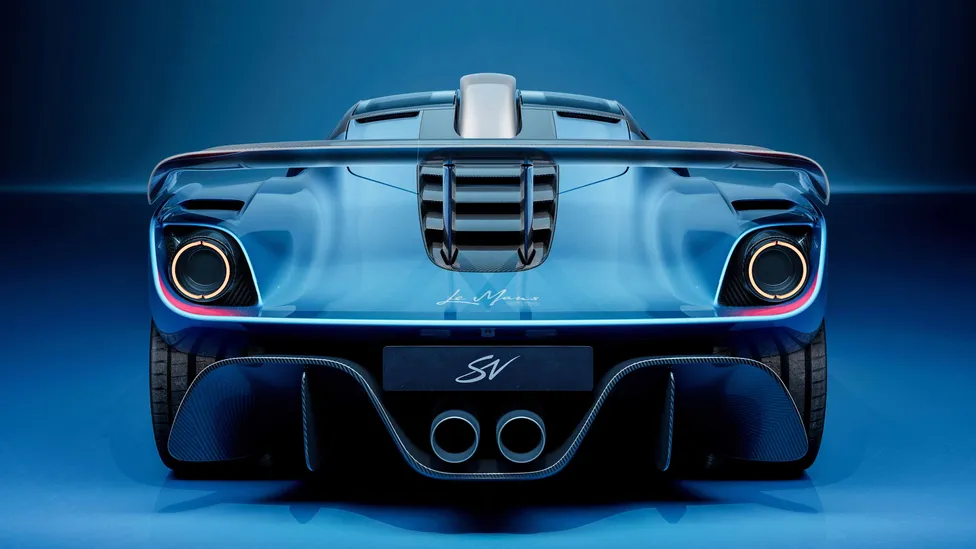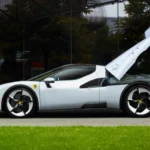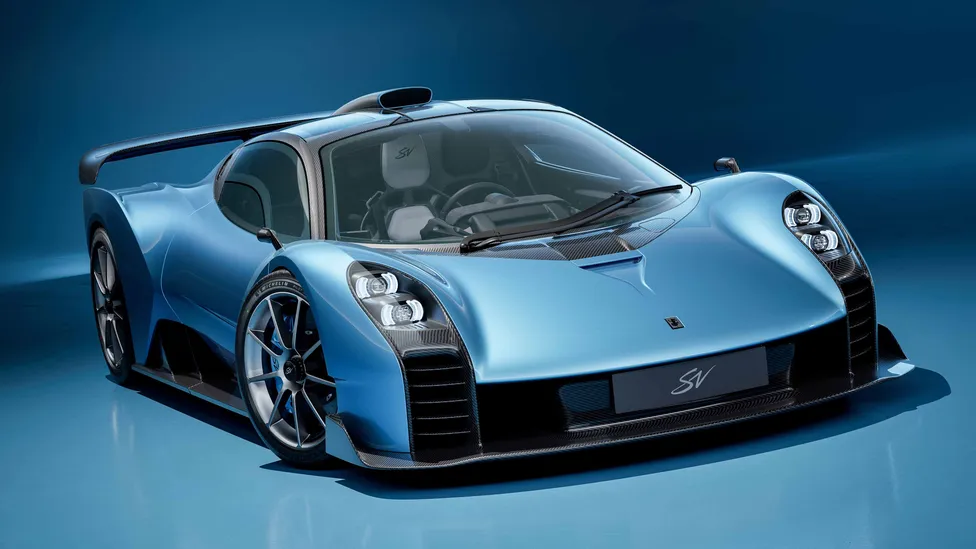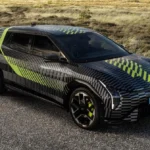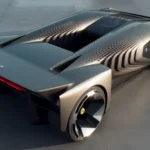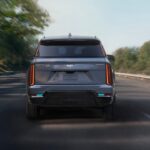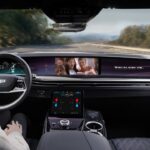Ferrari F76: A Digital-Only Hypercar That Exists Purely as NFT Art
Ferrari just announced something genuinely strange: a car that will never be built, never be driven on actual roads, and exists exclusively as digital files. The F76 is Ferrari’s first purely virtual vehicle, created as an NFT for members of their exclusive Hyperclub program. It’s not a concept car that might someday reach production—it’s intentionally, permanently digital.
The name references Ferrari’s first Le Mans victory 76 years ago, when Luigi Chinetti and Lord Selsdon drove a Touring-bodied 166 MM barchetta to victory in 1949. That car was real metal and actual racing. This F76? It’s pixels and blockchain entries celebrating Ferrari’s third consecutive modern Le Mans win with the 499P in 2024.
Whether this represents Ferrari’s vision of the future or an expensive experiment in digital collectibles depends entirely on your perspective about NFTs, virtual ownership, and what constitutes a “real” Ferrari.
What the F76 Actually Is
The F76 exists purely as digital assets distributed to Hyperclub members. Ferrari launched this membership program to engage wealthy clients interested in the 499P’s World Endurance Championship campaign. Members receive various digital content and experiences, with the F76 representing the program’s centerpiece virtual product.
Each F76 is unique based on personalization choices made by the member who “owns” it. Over the three-year Hyperclub program, Ferrari released different design options as exclusive “drops”—essentially releasing new customization elements periodically that members could apply to their digital cars.
There’s no physical counterpart. Ferrari won’t build even a single functioning prototype. The F76 exists entirely as 3D models, renders, and associated NFT blockchain entries proving ownership. You can’t drive it, you can’t touch it, you can’t even see it without accessing digital files.
For traditional car enthusiasts, this might seem absurd—paying for a car that doesn’t exist. But Ferrari is positioning the F76 as something different: a “design manifesto” exploring future styling directions without physical manufacturing constraints.
The Design: Unrestrained by Reality
Freed from real-world physics, materials science, and crash regulations, Ferrari Styling Centre director Flavio Manzoni and his team created something genuinely unusual. The F76 features a double fuselage design—essentially two separate body sections, one for driver and one for passenger, connected by aerodynamic elements.
This configuration supposedly maximizes airflow management by creating a central channel between the fuselages. Air splits at the front, flows through this channel (treating the entire car body as a wing to exploit ground effect), then rejoins at the rear where a second wing sits atop both tails above a unique diffuser design.
The vertical cuts along the flanks reference the recently-revealed F80 supercar, suggesting Ferrari intends this digital exercise to influence actual production car styling. Mathematical optimization via generative algorithms shaped many surfaces, creating forms that look organic rather than traditionally sculptural.
The central fuselage areas feature three-dimensional livery with lateral louvres—classic Ferrari design vocabulary rendered in ways that would be difficult or impossible to manufacture traditionally. The tails integrate thermal management directly into their structure through topology optimization, creating complex geometries for channeling cooling airflow.
At the rear, two vertical profiles define track width while the upper wing acts as a lintel highlighting the central channel as a “portal” to Ferrari’s claimed new design language. Four taillights integrate into this wing structure.
Up front, a band suspended between the wings takes the F80’s floating splitter concept to extremes. Below this band, the fuselages dive toward the splitter, creating ramps emphasizing both the central channel entrance and lateral ducts for wheel airflow. Two pairs of retractable headlights positioned under the suspended band reference Ferrari’s 1970s-80s pop-up headlight heritage.
The Interior: Dual Cockpit Concept
The F76’s interior features two completely separate cockpits, each theoretically equipped with full controls. Using hypothetical drive-by-wire technology, every driving input—steering, throttle, brakes—synchronizes between both positions, allowing driver and passenger to share the driving experience equally.
Whether this would actually work in reality is irrelevant since the F76 will never be built. As a thought experiment, it’s interesting. As practical automotive design, it raises questions about who’s actually controlling the car and how conflicts would be resolved if driver and passenger inputs disagreed.
But again, the F76 isn’t meant to be practical. It’s meant to be visually interesting digital art that Ferrari can use to explore ideas without worrying about regulations, safety, or feasibility.
Generative Design and Parametric Modeling
Ferrari emphasizes that the F76 employed generative design processes where algorithms create forms based on specified parameters and performance goals rather than designers manually shaping every surface. This combines biomimetics (drawing inspiration from nature), architectural principles, engineering requirements, and computational design.
The result supposedly includes several patented solutions, though Ferrari hasn’t specified what those patents cover or whether they’ll ever apply to actual vehicles. Filing patents on purely digital designs seems unusual unless Ferrari intends to eventually translate some F76 elements into physical cars.
The parametric approach means form, function, and performance theoretically merge as a unified organism rather than being separately optimized and then compromised to work together. Of course, without building and testing a physical F76, there’s no way to verify these claims. The car might look aerodynamically efficient in CFD simulations while being completely undriveable in reality.
The NFT and Personalization Angle
Each Hyperclub member who received an F76 could customize it by choosing from design options Ferrari released over the program’s three-year duration. These “drops” of new customization elements supposedly made each F76 unique to its owner.
The NFT component provides blockchain verification of ownership—a digital certificate proving you own this specific configuration of this virtual Ferrari. Whether that ownership has any meaningful value beyond bragging rights is debatable and depends entirely on whether anyone wants to buy your used digital Ferrari in the future.
NFT markets have been volatile, to say the least. Some digital assets have sold for millions, others have become worthless. Ferrari’s brand prestige might give F76 NFTs more staying power than typical digital collectibles, or the entire thing might age poorly as a relic of mid-2020s crypto enthusiasm.
The Hyperclub Program Context
Understanding the F76 requires understanding Hyperclub, Ferrari’s membership program built around their Le Mans and WEC racing efforts. Members paid substantial fees (Ferrari hasn’t publicly disclosed exact pricing) for exclusive access to team events, behind-the-scenes content, digital assets like the F76, and various VIP experiences.
Ferrari positioned Hyperclub as allowing clients to “experience the journey alongside the official team” during the 499P’s championship campaigns. The F76 served as a centerpiece digital reward justifying membership costs while differentiating Hyperclub from Ferrari’s other exclusive programs.
Whether Hyperclub members feel they received adequate value for their investment depends on individual expectations. Some probably appreciated the unique access and digital collectibles. Others might question paying potentially six figures for digital files and event tickets.
Real-World Influence vs. Pure Fantasy
Ferrari claims the F76 represents a “design manifesto” that will influence future production models. The vertical flank cuts supposedly inspired by the F80 (or vice versa—the timeline isn’t entirely clear) suggest some cross-pollination between this digital project and actual Ferrari design work.
But how much can a car that never needs to function in reality actually inform production vehicle design? Physical cars face countless constraints: crash safety, pedestrian protection, manufacturing feasibility, serviceability, visibility regulations, aerodynamic efficiency at real-world speeds, thermal management under actual use, material properties, cost limitations.
The F76 ignores all of that. It can have impossible proportions, unfeasible construction, and purely theoretical performance characteristics because it never needs to work. That freedom might generate interesting visual ideas that inspire production car details, but wholesale translation seems unlikely.
Think of the F76 more like a fashion runway outfit that’s never meant for actual wear but explores themes that influence ready-to-wear collections in diluted form. The double fuselage won’t appear on production Ferraris, but maybe some surface details or graphic treatments will.
The Broader Digital Collectibles Context
Ferrari isn’t alone in exploring digital vehicles and NFT collectibles. Multiple luxury brands have experimented with virtual products, blockchain authentication, and metaverse presence. Some see this as inevitable evolution as digital and physical worlds blur. Others view it as brands extracting money from wealthy clients for things that don’t actually exist.
Automotive NFTs have ranged from simple digital artwork of existing cars to elaborate virtual vehicles for use in games or metaverse platforms to purely collectible items with no functional purpose. The F76 falls into this last category—it’s not usable in any game or virtual environment, it’s just files proving you own a unique virtual Ferrari design.
The value proposition depends entirely on whether you believe digital ownership of virtual luxury goods has inherent worth, whether you trust NFT/blockchain technology to maintain that value long-term, and whether you care about owning something nobody else can have even if it doesn’t physically exist.
Who This Is Actually For
The F76 targets an extremely narrow audience: wealthy Ferrari enthusiasts with disposable income for Hyperclub membership, interest in the 499P racing program, and openness to digital collectibles/NFTs. That’s a small overlap even among Ferrari’s typical customer base.
Traditional Ferrari collectors who prize physical vehicles they can drive, display, and eventually sell to other collectors probably have little interest in digital-only cars. Younger, tech-forward luxury consumers comfortable with virtual ownership might find it appealing. Cryptocurrency/NFT enthusiasts with Ferrari brand appreciation could see value.
Ferrari likely views Hyperclub and the F76 as an experiment testing whether their brand prestige extends into purely digital spaces. If successful, expect more virtual products. If members feel they overpaid for digital files, Ferrari will probably retreat to safer territory of physical special editions and track experiences.
The Le Mans Connection
Ferrari tied the F76 announcement to their 2024 Le Mans victory (their third consecutive with the 499P) and the 76th anniversary of their first Le Mans win in 1949. That historical connection lends some gravitas to what could otherwise seem like a pure marketing gimmick.
The 1949 victory was significant—Ferrari’s first at the world’s most prestigious endurance race, establishing a legacy that would eventually include numerous wins across decades. The 2022-2024 victories with the 499P in the Hypercar class marked Ferrari’s return to prototype racing’s top category after years away.
But the connection between those real racing achievements and a digital-only virtual car is tenuous. The 166 MM that won in 1949 was a purpose-built racing machine that succeeded through engineering excellence and driver skill. The F76 is digital art. The branding association makes sense from Ferrari’s marketing perspective, but it doesn’t make the F76 itself more meaningful.
Read about this also 10 Amazing Concept- 10 Wildest Mercedes Concept Cars That Pushed Boundaries: From Fishy Designs to Solar-Powered Madness
